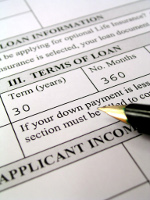Reestablishing Credit After Bankruptcy
Author: John Published Under: Business

Bankruptcy is the technical term for owing a whole lot more money than you have and not having the resources to pay it back. Bankruptcy helps protect us legally, creating a set of rules that determine what of our personal property is up for grabs and what is off limits.
Often, once someone files for bankruptcy, they become much more wary about how they use credit, sometimes only paying cash for many years. There is not anything that is necessarily wrong with this idea and if it leads to a more conscious method of money management, then there is certainly nothing wrong with this. However, the flip side to being wary of credit is that when you do finally need it again, it will take much longer to re-establish.
For this reason, it is important to think about reestablishing credit after bankruptcy.
What Should I keep in Mind When Reestablishing Credit?
One of the main reasons that reestablishing credit is so important is because after filing for bankruptcy, if you do not, you will have a very hard time getting credit when you actually need it. This is because in practice, most credit companies and lenders will check to see if the person has established any credit since they declared bankruptcy and how they have since used this credit.
If the person has made no move to establish credit, then almost all credit applications will be turned down or the lender will only offer subprime terms.
However, this does not mean that one should simply go out and get back in debt, instead it is important to learn from the bankruptcy and use this knowledge to change the way that money is managed.
One of the most important things to remember when reestablishing credit is that when taking out new lines of credit, it is important to only use companies that are well known and offer standard terms. It is easy to get in with a subprime lender, but this will end up being a very costly mistake and could result in similar debt problems.
What Are My Options After Bankruptcy?
After filing for bankruptcy, there are a few options, many of which are illegal, but still promoted by companies that call themselves credit repair agencies, but are in truth little more than extortion artists or loan sharks.
One of the most common traps to fall into is the credit repair trap. If you spend anytime watching late night television, you have certainly seen their ominous commercials, which play on the emotions of the person in an effort to sell their scheme. It is important to note, that 99% of the time, credit repair agencies do not have the best interests of the person in mind, often telling out right lies, such as asserting that they can guarantee good credit. Or, these companies may suggest changing social security numbers, which while arguably effective, is illegal.
In reality, most credit repair can be done by the consumer, simply by speaking with the creditors and asking for a deal. There is usually little that the consumer can not do on their own instead of using one of these agencies.
Others choose to simply always pay cash for everything and to an extent this is certainly a good idea. However, while this addresses the general concern of not falling back into the same patterns, it effectively takes you off of the radar of the Credit Agencies, which means that when you do finally pop back on their screen, they will be all that much more resistant to offering you a line of credit.
A much better approach is to responsibly open up very small lines of credit, perhaps starting with a secured credit card at your bank. By using this line of credit responsibly, paying all payments on time, and paying off debt early, it is possible to begin to restore your credit rating, without paying too much in credit card fees.
However, as your credit rating begins to rise again and credit lines expand, it is important to not fall into the same trap of spending outside of your means. This means, avoiding most of the credit card offers that may be sent and not putting more on your credit card than you have in your bank account.